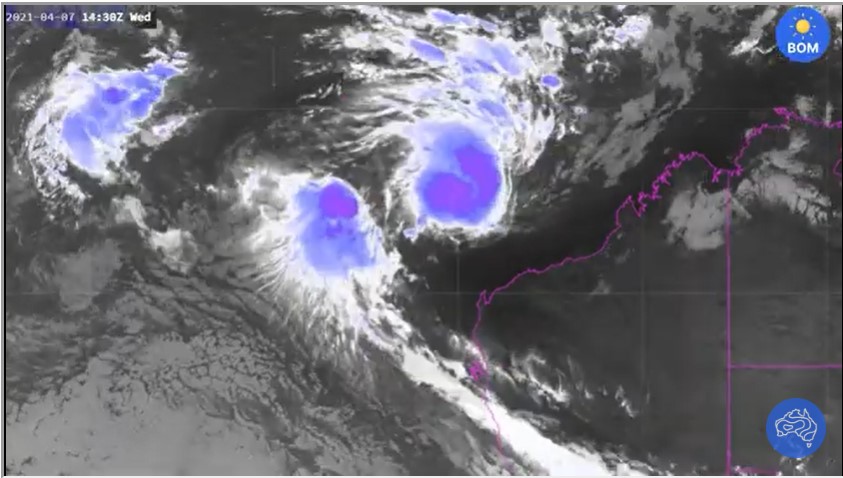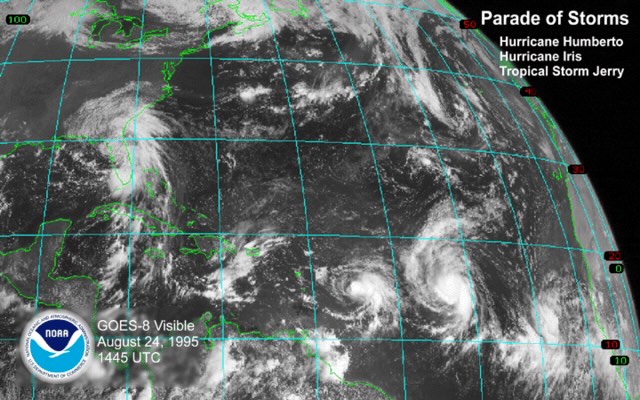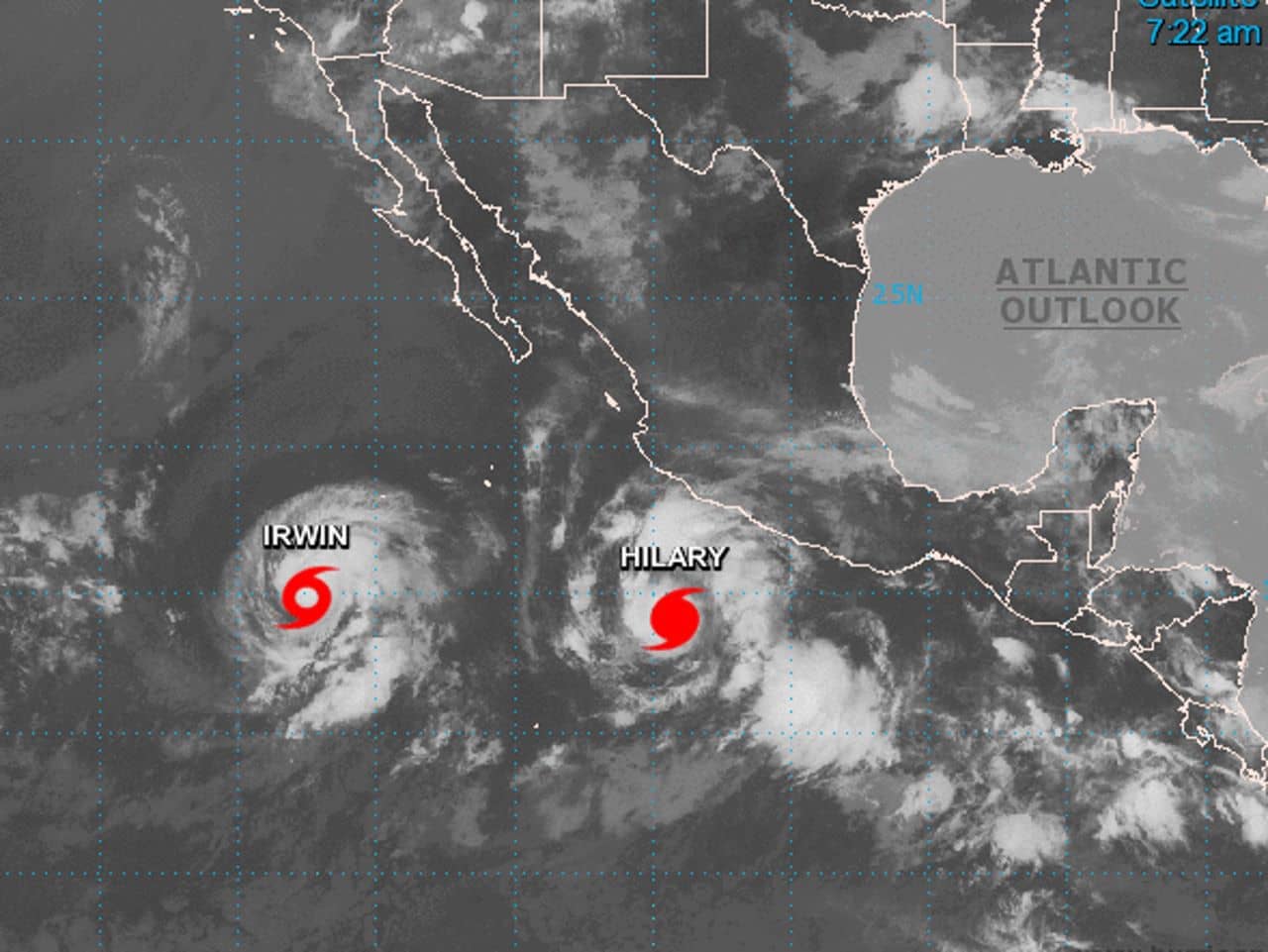Imagine two powerful hurricanes swirling in the ocean, gradually drifting toward each other. Instead of merging immediately or dissipating, they begin a mesmerizing dance, spinning around a common center. This rare weather phenomenon is known as the Fujiwhara Effect, and it can dramatically change the path and intensity of tropical storms. But what exactly causes this effect, and how does it impact weather patterns?
In this article, we’ll explore the science behind the Fujiwhara Effect, its historical occurrences, and the potential consequences when two storms interact with each other.
What Is the Fujiwhara Effect?

The Fujiwhara Effect is a meteorological interplay between two tropical cyclones (typhoons or hurricanes). It occurs when they come within approximately 870 miles (1,400 km) of each other. First described in 1921 by Japanese meteorologist Dr. Sakuhei Fujiwhara, this effect causes the rotation of two storms around a common center. The rotation happens due to the mutual gravitational and atmospheric influences of the storms.
Depending on their size, strength, and proximity, the interaction can bring several possible outcomes:
- Orbital motion. The storms begin rotating around each other while maintaining a relative distance.
- Merger. One storm absorbs the other, leading to a single, often stronger storm.
- Ejection. One storm is flung away, altering its projected path.
- Dissipation. If the interplay disrupts the structure of one or both storms, they may weaken and dissipate.
How Does the Fujiwhara Effect Work?
The key to understanding the Fujiwhara Effect lies in the dynamics of the low-pressure systems that define hurricanes and typhoons. As these storms rotate counterclockwise in the Northern Hemisphere and clockwise in the Southern Hemisphere, they pull toward each other when they get close.
The storms’ behavior depends on several factors:
- Size and strength. A larger storm will dominate a smaller one, potentially absorbing it.
- Distance apart. If the storms are too far, the effect is weak; if too close, a merger is likely.
- Environmental conditions. Wind shear, ocean temperatures, and atmospheric pressure influence the interplay between storms.
In a classic Fujiwhara interaction, the two systems begin orbiting each other, making storm tracking more unpredictable. With Rain Viewer’s real-time radar, you can monitor hurricane movements and see if two storms are interacting. If one storm is significantly stronger, it can either weaken the other or incorporate it into its own system.
Notable Examples of the Fujiwhara Effect in History
Though relatively rare, the Fujiwhara Effect has been observed multiple times throughout history. Some significant cases include:
Hurricane Iris and Hurricane Humberto (1995)

In September 1995, Hurricanes Iris and Humberto exhibited a clear Fujiwhara interaction in the Atlantic. The two storms moved in tandem, with Iris eventually absorbing Humberto, leading to a stronger system.
Typhoon Parma and Typhoon Melor (2009)

Source: NASA
In the western Pacific, Typhoon Parma and Typhoon Melor engaged in a Fujiwhara dance. This changed their paths, causing Parma to stall near the Philippines, leading to prolonged rainfall and devastating floods.
Hurricanes Hilary and Irwin (2017)
![Hurricanes Hilary and Irwin ][image4]
Source: NOAA
Off the coast of Mexico, Hurricanes Hilary and Irwin demonstrated a well-documented Fujiwhara Effect, rotating around each other before Hilary ultimately took dominance.
Hurricane Helene (2024)
The most recent potential case of the Fujiwhara Effect involved Hurricane Helene (2024). Although it interacted with a nearby low-pressure system, it ultimately did not engage in a full Fujiwhara Effect.
What Are the Consequences of the Fujiwhara Effect?
When two storms collide, the Fujiwhara Effect can lead to several significant consequences:
- Unpredictable storm paths. Storm paths can shift unexpectedly during Fujiwhara interactions. Use Rain Viewer’s live hurricane tracking to watch for sudden changes in hurricane direction and intensity, ensuring you stay prepared.
- Increased storm intensity. If a merger occurs, the resulting storm may be stronger and more dangerous.
- Extended duration of storms. Some storms stall due to Fujiwhara interactions, leading to prolonged heavy rainfall and flooding.
- Unexpected landfall locations. The altered movement can cause hurricanes to strike unexpected areas, impacting disaster preparedness and response.
Fujiwhara Effect Explained: Conclusion
The Fujiwhara Effect is a fascinating yet complex weather phenomenon that highlights the dynamics of our atmosphere. Though rare, its impacts can be significant, affecting hurricane forecasting, storm intensity, and disaster preparedness.
Understanding interactions like the Fujiwhara Effect will be increasingly important for meteorologists and emergency planners. Want to track hurricane interactions in real time? Use Rain Viewer’s storm radar to monitor developing systems, check projected paths, and stay ahead of potential Fujiwhara interactions before they impact land.






